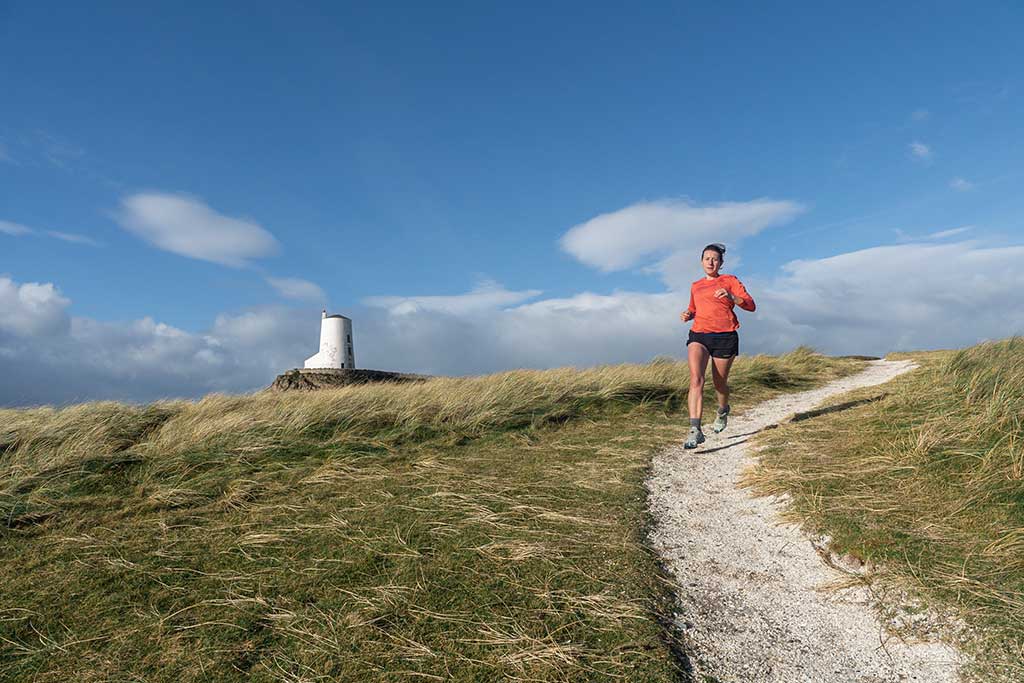Running and Training Advice from Sam Hill
Purpose & Goal Setting
It all starts with a question - "why do I run?"
It is beneficial for all runners to have a clear purpose. We put loads of hours into training, so for us to consistently keep getting out there and pushing ourselves, there needs to be a reason why! This reason is very different for all of us, but what is important is that we truly believe in that reason. It might be that you want to stay fit and health into old age, you might be really motivated to find out what your true athletic potential is, or you might really value the mental space that going out running gives you. Whatever it is, it is important that you are running for the right reasons - not because you think you should be.
To keep up motivation it is useful to have goals alongside our baseline aspirations and values. These goals might be training goals like I want to build up to being able to run 5 times a week. They might be race goals, or they might be personal challenge goals like an FKT (fastest know time) attempt. It is important to have goals all throughout the year to keep striving for something, but it is also good to have one or two main goals, an A race, that everything you do in your running life is generally working towards. This will be the peak of your running year. It is good to have lots of other little peaks along the way but having these specific high peaks, your A races, keeps you focused and won't dilute your training.
Again, with goals, always ask yourself WHY? Am I doing this race because it is right for me or am I doing it because it will look good on Instagram? Am I trying to run a 2:40 marathon because I am passionate about marathon running or because that's what all my friends have done? Running is a very individual sport, so make sure your goals are right for you. Be aspirational but only if it aligns with your enjoyment of running.
Time to get training - Where do I start?
How long is a piece of string? This is the most difficult thing to get right; doing the right training, at the right time, with the right amount of rest etc.
The difficulty with running training is that running is such a varied sport - even in the world of trail running. What you need to do to prepare for a fast 15km flat trail race will obviously differ massively from the preparation for a 100mile alpine race with 9000m of elevation gain. Also, we are all very different as individuals so how one person trains for an event will be very different for the next person. That is why off the shelf training plans never truly work, there are too many variables at play.
There are, however, a few general rules of thumb that you can keep in mind for whatever goal you are training towards:
- Consistency is key: The only way you get better at running is by going out consistently. It is no good running 6 days one week and then 1 day the next. Find the time in your schedule when it works best for you to get your runs in and make the time for it.
- Beware of burnout: Monitor your intensity. Doing lots of hard runs or running too long in "the grey zone" will mean that you will just burn out, get ill or injured. The majority of your running should be at a fairly easy pace, not stressing your anaerobic system. Although not perfect, the training ratio of 80:20 can be useful. 80% training volume at low intensity and 20% at high intensity. This is a very broad brush statement but can help avoid burnout.
- Listen to your body: Even though it is important to be consistent, if you feel a niggle that might turn into an injury or you are feeling super tired or dehydrated, it is much better to miss a day or two of running than risk getting injured or ill, which could put you out of the game for weeks. I often find in those situations that if I get out the door, start running, and 5mins into the run it feels like it will detrimental, I am strict with myself and go home. Your body will tell you when it needs rest - listen to it!
- Training + Rest = Adaptation: Don't forget about rest. Without it, your body won't have the time and energy to adapt to the training stresses. The amount you need to rest is different for everyone but studies have shown that there is less injury in people that take 2 rest days a week. If you need more than 2 rest days a week the advise is that you don't add any intensity into your running training until your body can handle running 5 days a week.
Programming your training is a minefield. There are three ways to get it right.
- Do a lot of reading. Search out the best current training advice from peer-reviewed academic papers, read books that are based on those papers and don't listen to social media influencers - most of it is rubbish!
- Do a lot of experimenting. It will take years to get it right, it is an exercise of trial and error, but if you put in the time you will start to understand what works for your body.
- Get a coach. The single best way to improve your running is to get advice from a professional. There are a lot out there so it is worth doing your research. Make sure they are qualified and experienced in the type of running you want to improve in. It might seem a bit fancy but everyone is doing it these days and it is pretty inexpensive. A good coach will cost you between £60 - £150 a month. Think about what negative things you spend money on in a month, like alcohol or fast food, and if you could cut down on those things you might find it easy to afford a coach.
Should I be doing Strength & Condition work?
Yes...and no. Like everything, there is no hard and fast rule. For some people, it is incredibly important to help avoid injury, for others, it gets in the way of doing a large volume of running and detracts from those important workouts, and other people just really enjoy it!
One thing that is worth keeping in mind is that lifting heavy and doing hard S&C workouts ie. heavy weight and low reps, has a negligible impact on actual performance - in the region of 1-3%. So, for all but elite athletes, it is probably not important to focus on this kind of workout.
For most of us doing low/body weight exercises with higher reps will benefit us in helping to avoid injury. Studies have shown athletes that do these kinds of exercises spend 50% less time injured - and that will have definite performance benefits.
Just like run training, strength training should be periodised, in the sense that its volume and intensity should change throughout the season depending on what you are training for. It should complement the type of training that you are doing and never get in the way oy you performing at your best on your key run workouts.
Never strength train on a rest day - then it is not a rest day!
Here are a few exercise ideas that you could throw into your weekly routine a couple of times a week. Choose a selection and combine them into a little circuit that you can run through a couple of times leaving 45sec between exercises.
Donkey Toes - 12 reps on each leg
Frog Bridge - 20 reps
Burpees - 10 reps
Standing Hip circles - 7 reps on each side
Glute Rainbow - 10 reps on each side
Squat - 10 reps
Pushups - 10 reps
Twisted Warrior - 10 reps each side
Box step ups and lateral box step ups - 10 reps each leg
Lunges - 12 reps each leg
Plank with leg raise - until form cant be held
S&C is a huge topic, and like with running programming, effective strength programming is best left to people with some expertise, so if in doubt seek advice.
Should I warm up before a run?
If you are going out for an easy, low intensity run all you need to do is slowly ease into the run. Maybe even walk for a few mins before you start running.
When going out for a high-intensity run it is important to warm up properly and get your muscles mobilised. Get the blood pumping with some star jumps and then some different leg swings and lunges are a good start. There are some good youtube videos with lots of different ideas. Check out:
What about cooldowns and rolling, stretching?
If you are doing an easy recovery or endurance run a cool down is not really necessary, but stopping without and cool down after a hard effort is not advised. Build-in at least 15min of easy running after hard efforts.
Stretching is a very individual thing but it is probably beneficial for most of us to do some post-workout stretching. We need to be mindful not to stretch areas of our body that doesn't need stretching. If we over lengthen muscles that can lead to injury. Here is some good advice:
https://runnersconnect.net/stretching-for-runners/
Foam rolling or myofascial release plays a great role in recovery, mobility and injury prevention. There is lots of great advice online (https://www.trainingpeaks.com/blog/why-when-and-how-to-use-a-foam-roller/) and it is fairly intuitive. One big mistake that is often made with foam rolling is going too hard. Also, don't roll your IT band - if you are having IT band issues it will make it worse!
As with all these things, if you have an injury or niggle it is best to seek professional advice to make sure you are doing the right things properly.



















